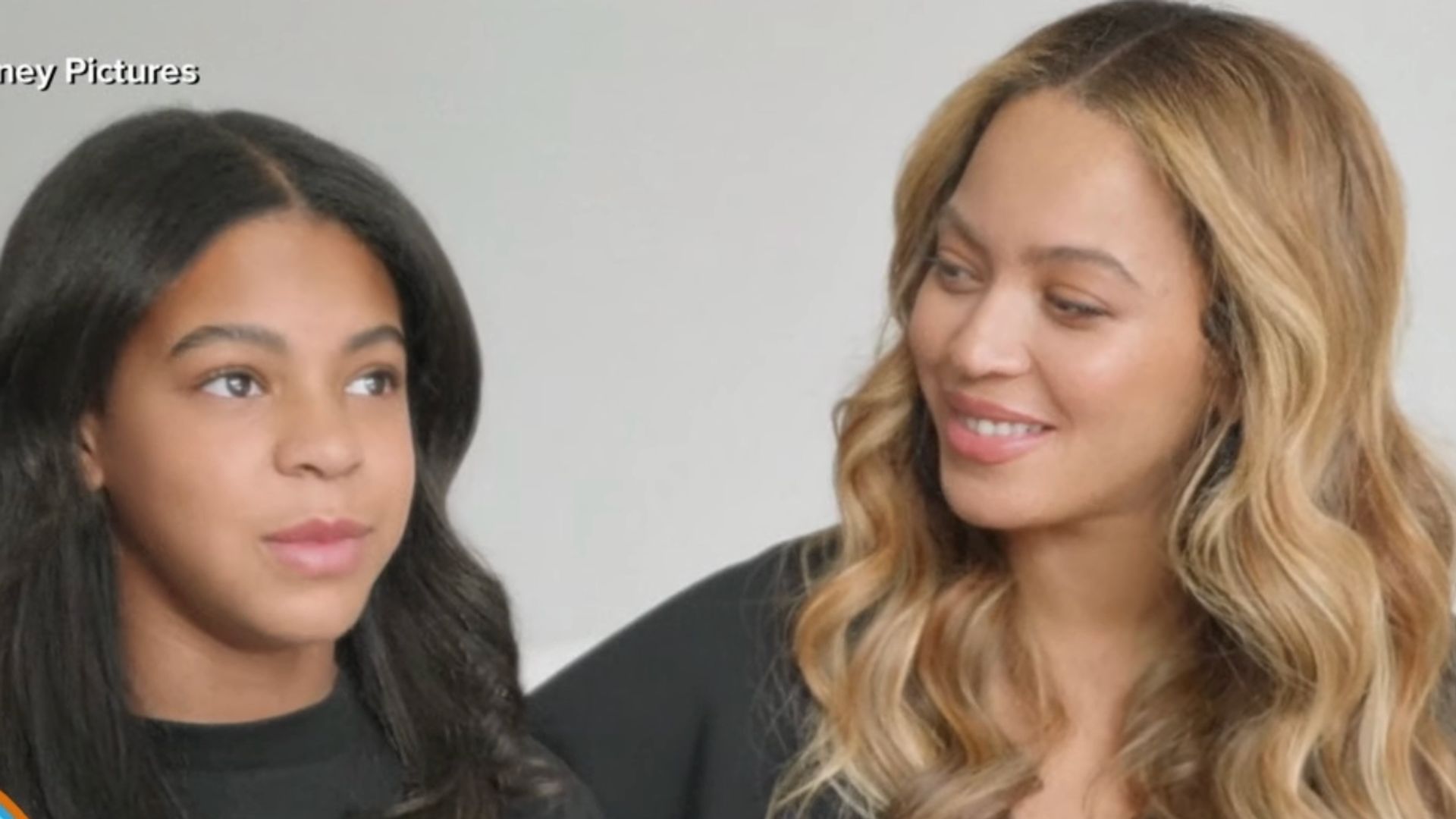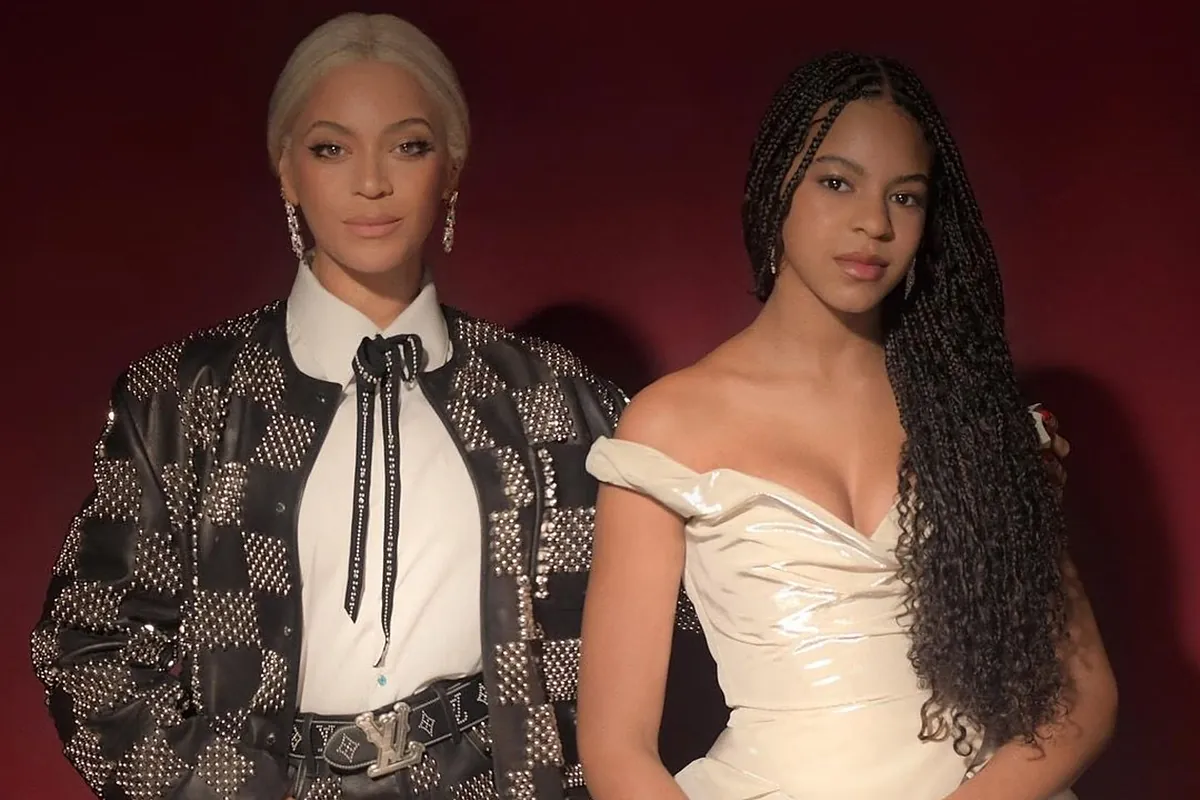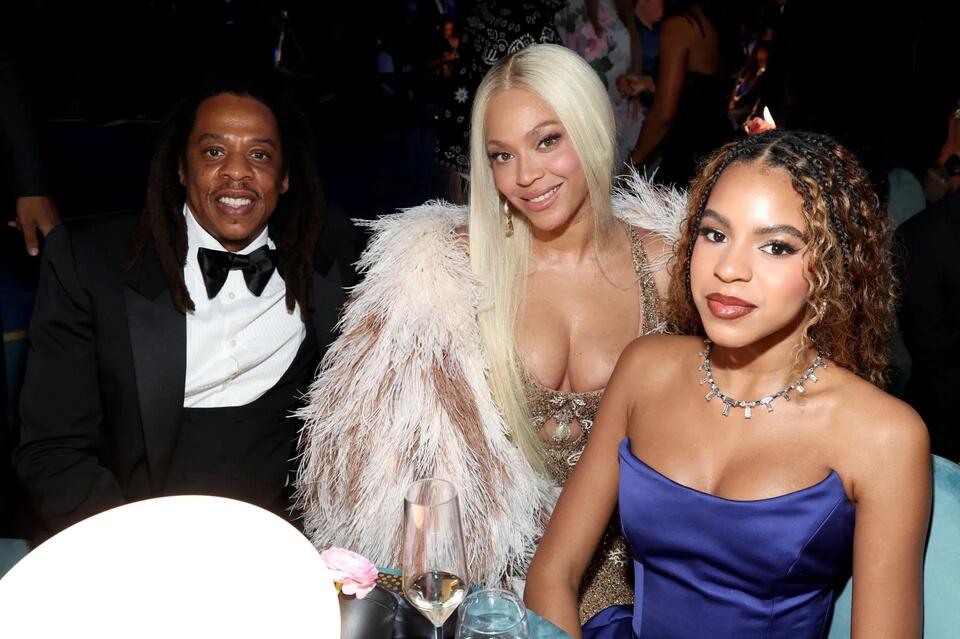The roar of the Cowboy Carter tour crowds drowns out a lot, but it can’t silence the whispers swirling around its youngest star: Blue Ivy Carter, at 13, is allegedly in the eye of a family storm over her appearance, with blind items claiming Beyoncé is pushing for a nose job to “correct” features inherited from Jay-Z and align her with the dynasty’s polished ideal. This isn’t just another gossip ripple—it’s a tidal wave crashing against the Carters’ carefully constructed empire, exposing tensions over beauty standards, generational pressure, and the perilous path from child prodigy to brand heir. As Tokyo Tony’s viral rants clash with BeyHive defenses, Blue’s story becomes a mirror for broader battles: How far will ambition stretch before it snaps a child’s spirit?
Blue Ivy’s public life has always been a high-wire act. From her 2012 birth—her cries sampled in Jay-Z’s “Glory,” topping charts before she could crawl—to her 2021 Grammy win for “Brown Skin Girl” at age 9, she’s been positioned as the ultimate nepo-baby triumph. Yet every milestone invites dissection. Her natural hair, a cascade of coils, drew toddler-era taunts; her facial structure, echoing Jay-Z’s strong nose and jaw, sparked memes measuring her against Beyoncé’s refined elegance. “She’s the spitting image of her billionaire father,” one blind item lamented in early 2025, “much to the apparent dismay of the glam team who are constantly working overtime to soften certain features before she hits the stage or the gram.” The item, circulating on sites like Crazy Days and Nights, paints a palace intrigue: Beyoncé (“Queen Mama”) and Tina Knowles (“Grandma Matriarch”) privately frustrated that Blue didn’t snag more of her mother’s “face card,” opting instead for dad’s blueprint. Insiders allege Blue, hyper-aware and reading comments, dove into makeup early to “tilt the scale more toward mom’s clone and less dad’s twin.” The kicker? A “long-term image strategy” including “future refinements once she’s of age”—nose job rumors “floated” like trial balloons.

This pressure cooker boiled over on the Cowboy Carter tour, where Blue’s cameos—fluid choreography, confident struts—earned raves but raised red flags. Critics online decried the “heavy makeup,” “mature dance moves,” and outfits that blurred age lines, arguing a 13-year-old shouldn’t command stages with such adult allure. “If someone who was not a Beyonce fan wouldn’t even be able to tell that Blue Ivy is 13,” one viral post fumed. Enter Tokyo Tony, Blac Chyna’s unfiltered matriarch, who unleashed a September 2025 tirade: “No 13-year-old of mine is going to be all of this in front of no wrong… She’s only 13. Her mother got her out there looking like a nasty ass, shaking… You put her ass out there.” Tony urged redirection to “real good things, mental health, stuff with children,” warning of predators lurking when kids are sexualized early. Her words struck a nerve, trending #ProtectBlueIvy and amplifying fears of adultification—the phenomenon where Black girls are robbed of childhood innocence faster than peers.
BeyHive pushed back fiercely, citing Beyoncé’s own origins: Starting at 9 in Girl’s Tyme, she was onstage young, but “dressed and looked like a child.” In her 2013 documentary Life Is But a Dream, Beyoncé reflected on the grind, and fans argue Blue’s involvement stems from passion, not force. “Beyonce clearly said she didn’t really want Blue on stage with her,” one defender tweeted, “but she made a deal with her to show commitment.” Blue’s tour rehearsals—grueling but chosen—mirror her mom’s work ethic, they say, with Beyoncé’s “mama bear instincts” ensuring protection amid security swarms.
Yet the nose job whispers add a sinister layer, tying into longstanding critiques of the Carters’ beauty narrative. Beyoncé, the ultimate icon, has faced decades of scrutiny over alleged shifts toward Eurocentric ideals: straightened or blonde hair, lighter skin tones that sparked 2023 Renaissance bleaching rumors. Tina Knowles clapped back then: “She does a film called the Renaissance where the whole theme is silver… and you bozos decide that she’s trying to be a white woman?” But 2025 Grammys photos reignited the fire—Beyoncé appearing “lighter than ever,” per critics comparing eras. Tina’s Destiny’s Child styling days come under fire too: In a resurfaced clip, she recalls dressing the teens, prioritizing what “they liked” but navigating designer biases sending “one or two nice things” for four girls. “Make each one feel special,” she said, but detractors see it as early enforcement of uneven standards.
Blind items frame this as inheritance: Beyoncé allegedly imposing the same “refinements” on Blue to fit the brand. “What’s a billion-dollar brand without a legacy act?” one quips, suggesting nose jobs and more to position Blue as the “next big thing,” willing or not. Fact-checks debunk specifics—no confirmed procedures, just anonymous “insiders”—but the speculation thrives on patterns. Bella Hadid’s regretted teen rhinoplasty looms large; Kylie Jenner’s fillers at 16 set precedents. For Black children like Blue, it’s compounded by colorism: Features closer to whiteness celebrated, Afrocentric ones “softened.”

Blue’s voice in this? Muted but telling. Tour clips show her beaming, but offstage glimpses—beach days, art with Jay-Z—hint at normalcy. Her Mufasa: The Lion King role earns praise for talent, not tweaks. Beyoncé’s memoir nods to boundaries: “Protect my light by dimming the noise… especially for my babies.”
The debate rages: Empowerment or exploitation? Tokyo Tony’s warnings echo child star pitfalls—think Michael Jackson’s pressures or Britney Spears’ breakdowns. BeyHive counters with agency: Blue chooses the stage, commits like her mom. Yet adult eyes on her moves unsettle, fueling petitions for age-appropriate paths.
As November 2025 tours wind down, Blue eyes high school amid this maelstrom. Her saga isn’t isolated—North West fields similar shade; Willow Smith shaved her head in rebellion. But Blue’s stakes feel seismic: A dynasty’s future hinged on a girl’s face. Fans flood with support: “Let her be 13, curls and all.” Change.org campaigns demand media blackouts on minor bodies.
In the end, Blue Ivy isn’t a blueprint to edit; she’s a beacon unfolding. Her panic, if real, pleads for pause in a world that sculpts before it sees. Beyoncé’s love is fierce, but legacy can’t cost a child’s comfort. As the blind items fade, one hope endures: Let Blue bloom wild, nose proud and path her own. True queens don’t need clones—they nurture originals.


